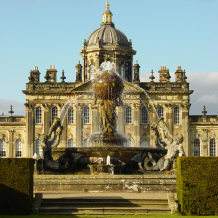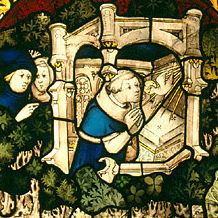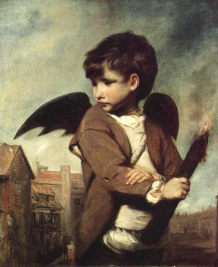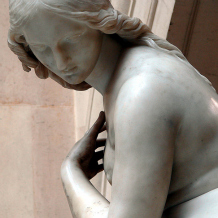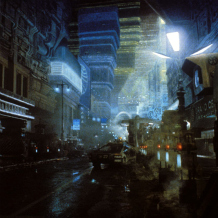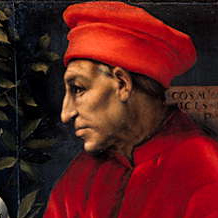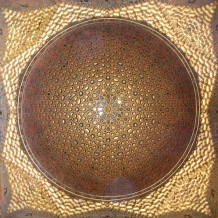The Materials of Art & Architecture
Overview
This module explores the material nature of works of art and architecture. You will learn how to describe, analyse and interpret the visual and material qualities of a wide range of media, including stained glass, sculpture and buildings, oil painting, works on paper, photography and performance. We will examine the impact made by the choice of particular materials and techniques on the appearance and meaning of the work of art or architecture, and we explore the history of looking and the reception of these material objects across a wide range of types and historical periods.
Aims
By the end of the module, you should have acquired:
- The ability to engage in close visual observation and to analyse and interpret visual material.
- Knowledge of a range of materials and techniques employed by artists and architects in different periods and an awareness of the impact made by materials and techniques on the work of art.
- Awareness of the history of reception and the ways in which works have been designed for viewers, audiences and consumers.
- Understanding of ideas concerning materiality.
Critical readings in the History of Art
Overview
This module introduces you to some of the leading writers and writings that have shaped History of Art as an academic discipline from the 19th century to our own time: that is, critical readings in the sense of essential texts within the subject. You will also be introduced to a range of analytical tools that will help you to assess the texts that you read and to write well-informed, analytical arguments yourself: critical readings in the sense of skeptical analysis of what you read. Both of these aspects of the module provide a crucial foundation for your future success as an art historian.
Aims
By the end of the module, you should have acquired:
- Familiarity with a range of secondary texts in the discipline of art history
- The ability to analyze and evaluate written arguments concerning works of art and architecture
Preliminary Reading
Charlotte Klonk and Michael Hatt, Art History: A Critical Introduction to its Methods (Manchester, 2006)
Reinventing Antiquity
Overview
Reinventing Antiquity deals with one of the most fundamental characteristics of the discipline of the History of Art, its historical perspective. By taking up the theme of the revival and reinterpretation of classical antiquity, you will examine how a history came to be ascribed to art and how ideas about the past have influence in the present. As will become apparent, similar forms can take on dramatically different meanings at certain historical moments.
Aims
By the end of the module, you should have acquired:
- A sense of historical perspective, acquired through a study of the transformations of the art of antiquity over two millenia.
- A broad understanding of the chronology of the classical tradition, from antiquity to the present.
- The ability to identify and analyse the use of classical types in later art.
- The ability to employ the appropriate terminology.
Preliminary Reading
Preliminary reading
- Donald Strong, Roman Art, prepared for press by J.M.C. Toynbee, revised by Roger Ling (second edition, New Haven and London, 1988)
- J.B. Ward-Perkins, Roman Imperial Architecture (New Haven and London, 1994)
- Richard Krautheirmer, Rome, Profile of a City (312-1308) (Princeton, 1980)
- John Onians, Bearers of Meaning, The Classical Orders in Antiquity, the Middle Ages, and the Renaissance (Cambridge, 1988)
- Erwin Panofsky, Idea, A concept in Art Theory, English trans. (New York, 1968)
- Erwin Panofsky, Renaissance and Renascences (London, 1970)
- Francis Haskell and Nicholas Penny, Taste and the Antique (New Haven, 1981)
- Hugh Honour, Neoclassicism (Harmondsworth, 1968)
You are strongly advised to buy this book:
- John Summerson, The Classical Language of Architecture (revised edition, London, 1980)
Theory for Art Historians
Overview
This module will introduce you to the rich complexity of the discipline of art history and introduce you to a series of texts that challenge commonly held assumptions about artists, artworks, the practice of interpretation, and the discipline of art history. You will hone your close reading skills and powers of literary, critical and rhetorical analysis, as well as your powers of verbal argumentation through in-class discussion.
Aims
By the end of the module, you should have acquired:
- A critical knowledge of 8 carefully chosen problems central to art historical writing and thinking today.
- A critical awareness of the ways in which theory is implicated in art history.
- A greater awareness of the challenge and productiveness of engaging with difficult texts.
- A developing awareness of your own implication in art history’s exclusionary practices.
Preliminary Reading
We strongly recommend that for this module you purchase a copy of:
- Robert S.Nelson and Richard Shiff, eds, Critical Terms for Art History, 2nd ed. (1996; Chicago, 2003)
This book provides a set of essays on key themes in art history, written by leading scholars. Several of these essays will be recommended reading throughout the term, and for copyright reasons it will not be possible to make these available digitally, so it will be to your great advantage to have your own copy. It is available for under £20 in paperback and as a Kindle book. Please be sure to buy the second edition, 2003, rather than the first edition of 1996, as some of the essays we recommend are not included in the first edition.
Other overviews of theoretical approaches used in art history which you may find useful as supplementary or preliminary reading include:
- Anne D’Alleva, Methods and Theories for Art History, 2nd ed. (1995; London, 2012)
- Laurie Schneider Adams, The Methodologies of Art: An Introduction, 2nd ed. (1996; Boulder, 2009)
- Michael Hatt and Charlotte Klonk, Art History: A Critical Introduction to its Methods (Manchester, 2006)
- Jae Emerling, Theory for Art History (New York and London, 2006)
Objects in Focus
Overview
In this intensive Summer Term module, you will study a discrete art historical topic in a sustained and cumulative way. Under the expert guidance of an academic specialist you will build upon the skills and techniques you developed in the Autumn and Spring Terms. Objects in Focus will introduce you to the diverse and multifaceted nature of art-historical enquiry, and provide an excellent, hands-on introduction to the more in-depth study of Stages two and three.
Aims
By the end of the module, you should have acquired:
- A detailed knowledge of a clearly defined art historical subject
- A knowledge of its literature
- Experience of the diverse and multifaceted nature of art historical enquiry
Language Module or The Art of Describing
Your Choice
Your degree; your choice.
For your final Stage 1 module you have the choice of two exciting pathways, both of which will equip you with the linguistic skills to support your art historical studies:
-
Learn a Language
At York we believe that knowledge of a foreign language can enhance your studies in History of Art and increase your employability in the years ahead. We offer exceptional opportunities for foreign language study, from general courses which equip you to find your way around cities abroad, to specialist courses which help you to develop skills that are particularly relevant to art historians. Read more.
| If you choose to study a language at Stage 1, you will be well prepared to undertake study abroad with one of our Erasmus partners or the University's worldwide programmes. |
OR
-
The Art of Describing
In this module, you will visit a series of works of art and architecture in York and beyond. Building upon these encounters, you are introduced to the first-hand study of art and architecture and learn how to describe these experiences in words. By the end of the module, you will have:
- visited works of art and architecture in local museums, galleries and other public spaces
- developed the ability to analyse works of art in the original, and an understanding of its potential application
- developed the ability to describe works of art and architecture in academic prose.
